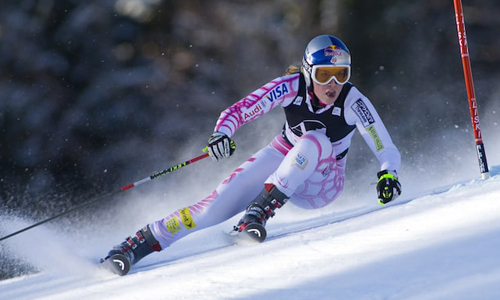The Development of the Modern Ski Boot
 Skiing is more fun and entertaining when you are well equipped. Someone who believes in “prevention is better than cure” theory will agree with the fact that wearing the right pair of ski boots is a safe bet when it comes to skiing in densely covered mountains. Gone are the days when boot designs were dictated by binding design. This era is ruled by skiers who opt for boots crafted using new materials along with updated technology.
Skiing is more fun and entertaining when you are well equipped. Someone who believes in “prevention is better than cure” theory will agree with the fact that wearing the right pair of ski boots is a safe bet when it comes to skiing in densely covered mountains. Gone are the days when boot designs were dictated by binding design. This era is ruled by skiers who opt for boots crafted using new materials along with updated technology.
In the bygone era, till around the 1840s, a ski binding was nothing but a leather strap. The only emphasis was on maintaining a dry environment inside the boot. With just a minimal design to flaunt and a tough outer, made from a mixture of wax and animal fat, the ski boots were too heavy. In fact, skiing shoes were used only by farmers and hunters in Norway and were used for basic walking and a less-frequent skiing session. The Saami skiers who were the original Lapplanders tried to give the ski boots a revolutionized look. Hence, the boots now feature a vertical lip on the toe in order to avoid sliding back.
Skiing was not a well-known sport earlier. However, with time, skiing gained popularity and was passionately practiced by sports enthusiasts. Knowing the tactics behind maintaining balance and going for real jumps requires the skier to possess the talent of both steering and edging. It was in 1840 that the binding in the boots started getting stiffer along with the invention of the heel strap. Even though Saami-style toes were still in use, the buckle loop that was added to the boots helped in keeping the heel strap in place.
Eventually toe strap became steel toe iron, whereas the heel strap got sturdier. Mostly boots with heavy soles were put to use. When one talks of climbing boots, one cannot help but talk about the steel cleats or calks that were nailed onto the shoes for improving the traction on hard surfaces.
Cobblers and their Art of Boot Making
Boots were always handmade by the cobblers. The Napoleonic Wars saw the mass production of military boots in England. However, such changes never really had any impact on ski boot designs. Being custom made, the ski boots were designed by cobblers who took a precise measurement of the foot before getting to work.
Soon the business of boot production reached new heights, with thousands of boots being produced in bulk every day. The sewing machine made the task a lot easier. By 1885 companies in Europe shipped shoes and boots all across the world. Stepping foot into the new century brought with it the first mass-produced leather ski boots.
The Alpine Boots
 The first cable binding design came up in 1928, invented by Guido Reuge - a Swiss ski racer. For cross country racing and ski jumping, a flexible sole was required. It was only in 1928 when a steel edge for alpine skis was invented. This made having full power control on steep and icy surfaces. From Swiss, this whole idea spread to America.
The first cable binding design came up in 1928, invented by Guido Reuge - a Swiss ski racer. For cross country racing and ski jumping, a flexible sole was required. It was only in 1928 when a steel edge for alpine skis was invented. This made having full power control on steep and icy surfaces. From Swiss, this whole idea spread to America.
Leather boots were never a good bet for skiing purposes. These would easily get sloppy on repeated use. Imagine skiing with soft and wet leather boots? Is such a thing even possible? Winter and skiing meant a need for robust shoes.
The game of Buckles
There were researches going on, to improve and make the boots stiffer. Hans Martin a Swiss bike racer came up with the patented ski boot buckle idea in 1954. The buckle made a huge difference for skiers. Further the boots became stiffer with the addition of plastic heel cups and cuff reinforcements.
Introduction of the Plastic Outsole
With immense research and experiments in abundance during the 1960s, each new day brought the invention of new technologies. Bob Lange and Dave Luensmann were the first ones to make a vacuum-molded plastic boot shell.
The polyurethane outsole with high-speed injection molding machinery replaced the hand stitching of the sole. This was soon adopted by competing factories. There was no trace of the leather boot in the near future. Plastic boots were the new charm and the fashion of the era.
The French Invention
France too contributed its bit in this zest of upgrading by developing a new technique. The use of knee flex to absorb made it unique. This was termed as “avalement”, which meant “swallowing”. By 1973, a new modern boot for skiing had come into existence. Unlike leather boots, these plastic boots did not get damaged or break.
However, the racers always preferred closer shell-to-foot fit boots. The standardization of the ski boot sole in 1970s was a huge advancement. With ski bindings having a reliable mechanical surface to grasp, good ski boots were seen as an asset.
Much later in the 70s, Sven Coomer developed the “orthotic” insole for improving power, comfort, and precision. Over the decades, the soft and comfortable “walking” boots that could slip into a supportive exoskeleton for skiing became another alternative.
The Olympic Games gave the sport of skiing a new identity. With three gold medals in Sapporo 1972, brands like Lange gave ski boots an overall new appeal with promising comfort and optimum quality. With a rich past ski Boots have come a long way. The new XT free tour by Lange is the upcoming style. Lange set up a cult innovation in the sphere of ski boot invention. Setting many benchmarks, Lange is a quintessential high on design and comfort ski boots.
Ski gear, especially boots, plays an important role in offering skiers the utmost comfort and flexibility to try out various stunts and still feel safe. To be in the art of buying the right pair of shoes or boots for the sport, it is incumbent to not just know the rules but to have great factual knowledge too. Knowing to what century the sport of skiing dates back to along with the origin of ski boots will surely keep you well sound while you opt for the sport this season.

Submit a Comment